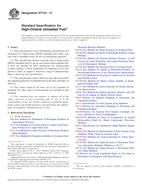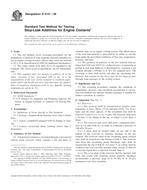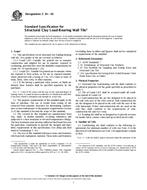1.1 This test method is written principally for large medical instruments or instruments with internal channels or recesses (for example, flexible endoscopes) but may be used for any resuable medical instruments.
1.2 This test method describes a procedure for testing the efficacy of a cleaning process for reusable medical instruments artificially contaminated with mixtures of microorganisms and simulated soil.
1.3 The test method utilizes bacterial spores as tracers for foreign materials and quantifies their removal as a means of determining the efficacy of a cleaning process.
1.4 The test method is designed for use by manufacturers of medical instruments and devices. However, it may also be employed by other individuals who have a knowledge of the instruments, techniques and access to appropriate facilities.
1.5 Worst-case conditions can be represented by exaggerating a specific test parameter or otherwise intentionally simulating an extreme condition such as performing the test without cleaning solutions or utilizing instruments which are not new.
1.6 The test procedure is devised to determine the efficacy of a cleaning process as applied to a particular instrument or group of instruments by simulating actual use situations.
1.7 The test procedure may be performed on test instruments using a complete cleaning cycle or be limited to particular phases of the cycle such as precleaning, manual cleaning, automated cleaning, or rinsing.
1.8 The test procedure is normally performed on a number of external and internal sites, but it may be restricted to one particular site on the instrument.
1.9 A knowledge of microbiological and aseptic techniques and familiarity with the instruments is required to conduct these procedures.
Note 1 – Because contamination of the surfaces of instruments may occur as a result of rinsing with tap water, bacteria-free water should be used for all rinsing when a water rinse step is part of the cleaning directions.
Note 2 – Test methods to determine the effectiveness of cleaning medical instruments has only recently been actively debated, and research efforts are in their infancy. Because published experimental results are scarce, it is premature to dictate experimental reagents, conditions or acceptance criteria.
Note 3 – The total elimination of the target organisms is not the goal of cleaning. Therefore, there will almost always be a number of microorganisms surviving on the test instruments unless one of the solutions or processes disinfects or sterilizes the test instrument. The results of various clinical and laboratory tests suggest that cleaning processes alone can produce a 10² to 104 log10 reduction in bioburden. The exact reduction will depend upon the precise experimental conditions. The criteria for judging cleanliness should be determined and recorded before initiation of the test procedure.
Note 4 – This test protocol employs target spores as indicators or tracers for foreign materials and monitors their removal by the cleaning process. It is certainly possible that other particulate target materials, such as microbeads (latex beads) could be used in place of microbes. These alternate approaches would be more practical in those circumstances where microbiological expertise is limited.
1.10 The values stated in SI units are to be regarded as standard. No other units of measurement are included in this standard.
1.11 This standard may involve hazardous materials, operations, and equipment. This standard does not purport to address all of the safety concerns, if any, associated with its use. It is the responsibility of the user of this standard to establish appropriate safety and health practices and determine the applicability of regulatory limitations prior to use.
Product Details
- Published:
- 05/01/2008
- Number of Pages:
- 6
- File Size:
- 1 file , 84 KB


